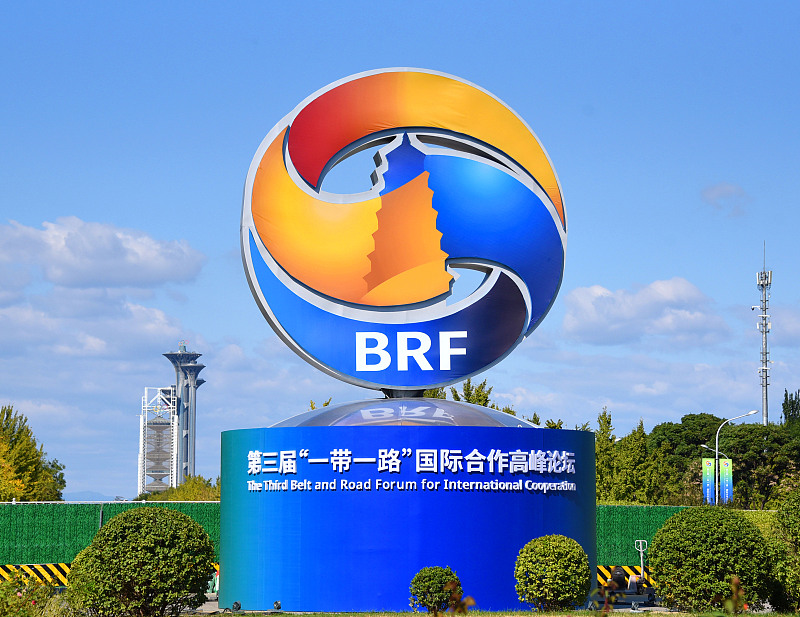Published: October 18,2023


More than 2,000 years ago when intrepid predecessors opened up the ancient Silk Road, they promoted not only the prosperity and development of countries along the routes, but also the progress of human civilization.
Today, human civilization and economic globalization see new patterns emerging. China, working hand in hand with participating countries, has cultivated the Belt and Road Initiative (BRI) to a stage of fruition since this grand vision of building an interconnected, win-win and modernized world was formulated 10 years ago.
The BRI has blazed a new path to common prosperity, advancing a new development-oriented paradigm different from Western modernization. The BRI is neither the Marshall Plan after World War II nor a Chinese conspiracy. It is, if anything, a plan in the sunshine — an overt, positive approach to modernize not only China itself, but humanity as a whole. Over the past decade, the BRI has significantly improved global connectivity and trade, with more than 3,000 projects launched through cooperation between Chinese and foreign partners, involving close to 1 trillion U.S. dollars of investment. It has created at least 420,000 jobs for participating countries.
The BRI’s success during the last decade is based on its core principles of extensive consultation, joint contribution and shared benefits that promote true multilateralism as well as equitable and just global governance. Participation in the BRI is of course entirely voluntary, stemming from the needs of developing countries and recognition of the shared values in BRI cooperation. The BRI success has been achieved despite constant smears from some in the West, who falsely accuse the BRI of “debt trap diplomacy” and “neocolonialism” in partner countries. The fact is, China has engaged in increasing all-round cooperation with its BRI partners, sharing with them its success and jointly endeavoring toward modernization.”Roads first, then prosperity” is a common Chinese folk saying rich in practical wisdom.
The Chinese people usually see roads as the “main artery” of escaping poverty and getting rich. No other country in the world has built such large-scale transportation infrastructure in such a short period of time in poor areas. A large number of transportation infrastructure projects have injected strong impetus into the development of BRI countries.
The World Bank estimates that the BRI could help lift 7.6 million people out of extreme poverty and 32 million out of moderate poverty. In addition to economic and trade cooperation, the essence of cultural exchanges must not be overlooked, as it is a manifestation of mutual learning among civilizations. When the hearts and minds of people in different countries are connected, all other things become easier.
A model of people-to-people exchanges characterized by dynamic interactions and diversity has underpinned public support for furthering the BRI. History has shown us time and again that the seclusion and estrangement of different civilizations can only hinder world peace and development. Civilizations blend more than they clash. The proof of the pudding is in the eating, and people from partner countries have made clear their preference for the down-to-earth BRI compared to the pie-in-the-sky plans of the West.William Brown, an American professor at Xiamen University, pointed out that for a decade, the West has proposed alternatives to the BRI, proclaiming their superiority, yet these claims have never materialized, and this doesn’t seem to change.
Developing countries in pursuit of industrialization face a fundamental challenge, which is the lack of capital. China felt its way and has found its own path to industrialization, thus it holds an understanding different from the West toward the challenges faced by those non-Western latecomers. Besides sustainable financial support within the BRI framework, “teaching people how to fish” is equally and even more important.
Egypt’s political analyst Nadia Helmy noted that China doesn’t aim to exploit Africa as the West imagines, because along with developing African infrastructure, the BRI is helping Africa transform itself through strategic synergy with participating countries from the Global South, the BRI puts the future into developing countries’ own hands. As the Global South is quickening its pace in pursuit of modernization, the BRI will doubtlessly give this process a consistent push.
Xinhua
 Africa -China Review Africa -China Cooperation and Transformation
Africa -China Review Africa -China Cooperation and Transformation
